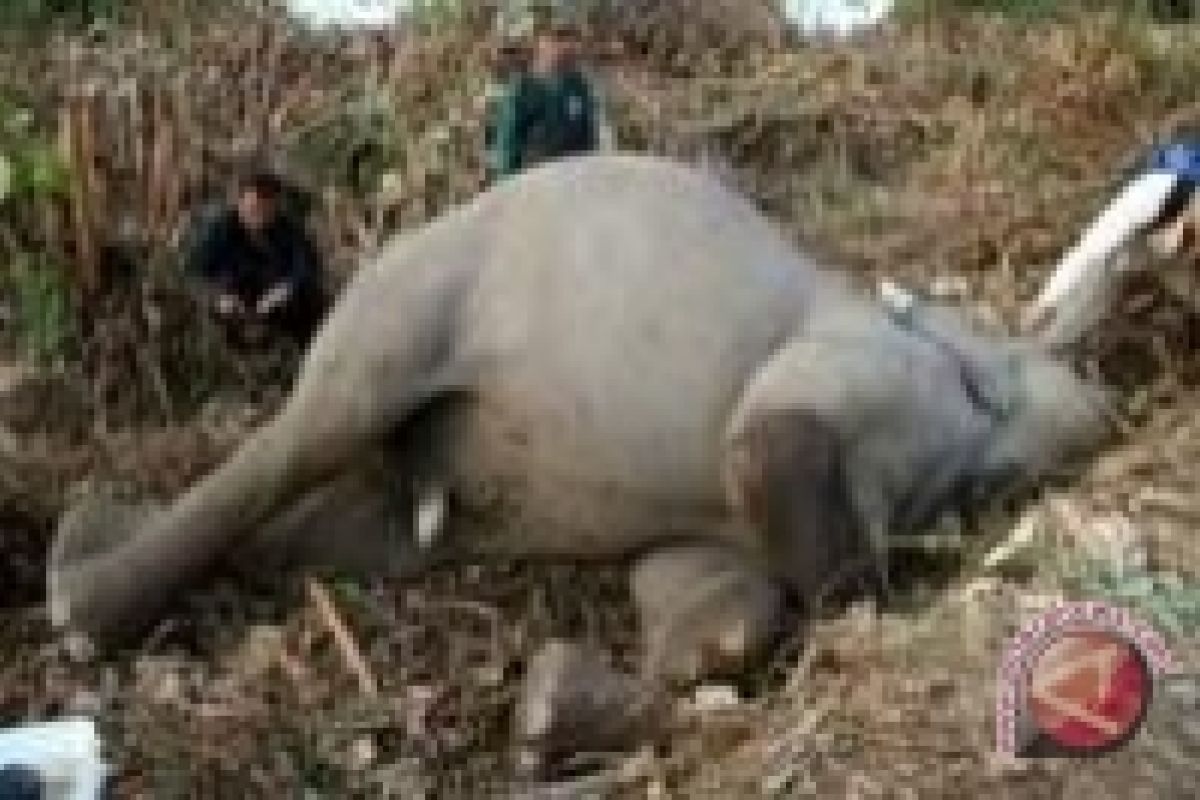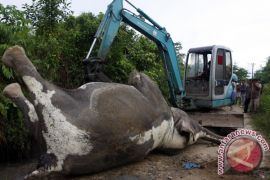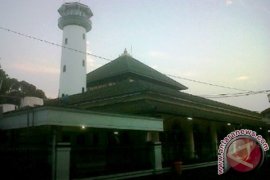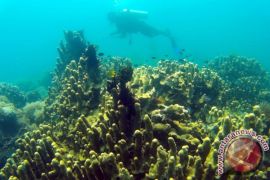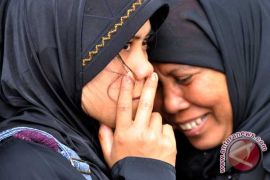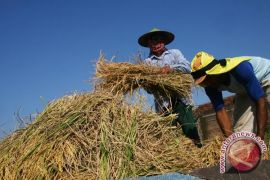At least 14 elephants were found dead during the period of 2004-2011, but who had caused their deaths has remained "not known".
Among the most tragic one occurred in May 2002, when a herd of 17 Sumatran elephants were poisoned in a community oil palm plantation on Sumatra island.
The latest deaths of Sumatran elephants were found in April 2011 when four elephants were reportedly poisoned to death in an oil palm plantation at Putri Hijau, North Bengkulu district, Bengkulu Province.
"We obtained the information from a ProFauna activist who stayed around the Sablat Elephant Training Center. Based on the information, the four elephants were found dead in the Alno plantation area," ProFauna Bengkulu spokesman Radius Nursidi said in Bengkulu last month.
The NGO has urged Bengkulu`s Natural Resources Conservation Agency (BKSDA) to investigate the deaths of the four Sumatran elephants.
"The BKSDA and police must investigate this case because elephant deaths happen almost every year but the perpetrators are never punished," Radius Nursidi said in Bengkulu, Thursday (May 12).
"Ironically, of all those cases, none has been legally processed. This has become our note and big question mark toward BKSDA and law enforcers," he said.
The Bengkulu police and BKSDA are in fact investigating the death of four wild elephants.
"The investigation process is underway by North Bengkulu police," Head of Bengkulu Police Brig. Gen. Burhanuddin Andi said in Bengkulu, recently.
According to him, the initial suspicion indicated that the elephants had eaten fertilizer spread around trees in the plantation and that had lead to their deaths.
However, the case would continue to be investigated although there is no criminal act, he said.
On a separate occasion, Head of the Bengkulu BKSDA Amon Zamora said that based on the autopsy result of one of the four dead elephants, it had eaten fertilizer because there was a high content of nitrogen in its body.
"This is just a preliminary suspicion, because there is salt in fertilizer, and elephant likes it, and it could cause its death," he said.
It is not known yet whether the fertilizer had been put around tree on purpose and the elephants had later eaten them, or the wild elephants had entered the plantation`s warehouse where the fertilizer was kept, he said.
According to data from 2007-2009, there were at least 21 conflicts between elephants and local people in Indonesia which estimated to have caused a Rp500 million of material losses per year.
Amon in January 2011 suggested the Bengkulu authorities to extend the area of conservation from only 6,000 hectares to be 15,000 hectares.
"We need to escalate the home area of those protected elephants. Ideally, one elephant needs a 400 hectares of home area," Amon said.
According to the local BKSDA, the population of wild elephants at the Elephant Training Center (PLG) in Seblat, North Bengkulu, Sumatra , has increased from 50 to 70 over the last two years.
During the first trimester of 2011, eight new baby elephants were born in the 6,800-ha forest area, Anom Zamora, in March 2011.
Most of the wild elephants used to live outside the Seblat PLG and to disturb oil palm plantations. After being herded into the Seblat PLG with the help of trained elephants, the wild elephants seemed to feel comfortable as there was a lot of food and no poachers at the PLG.
Bengkulu Province is estimated to have around 200 elephants found among other things in Bukit Barisan forest and the Seblat PLG.
The story of wild elephants in Riau, another province on Sumatra Island, is similar to that in Bengkulu Province.
Two Sumatran elephants, both female, were found dead recently at Duri village, Bengkalis District, Riau Province.
The first dead elephant was found late March 2011. The case had caused a furor among local villagers because the 20-year elephant was lying in the middle of a road with a two-year old elephant.
Despite emergency aid given to the adult female elephant, she finally died in the secondary forest area of PT Chevron Pacific Indonesia at Duri. On April 1, another female elephant was found dead in the same Duri area.
"There are indications that the two elephants died after being poisoned," Riau BBKSDA Chairman Syahimin said in Riau, early May.
The confirmation about the cause of their deaths, was received from a sample test from the Veterinary Test and Investigation Office (BPPV) in Bukittinggi, West Sumatra.
World Wide Fund for nature (WWF) has urged the Riau BKSDA to thoroughly investigate the deaths of the two female elephants and bring the perpetrators to justice.
"BKSDA should be seriously enforce the law and protect the animals," WWF Riau Spokesman Syamsidar said in Pekanbaru, on May 4.
Killing protected animals such as elephants could be punished according to the Law No. 5/1990 on Conservation of Natural Resources and Ecosystem.
He also called on BBKSDA Riau to realize a plan to set up a flying squad to protect Sumatran elephants at Duri.
Based on WWF data, at total of 54 wild elephants have died since 2006 to early 2011, leaving the population of elephants in Riau Province to only around 350.
According to WWF data, no single human-elephant conflict cases have been brought to court despite of a huge number of conflicts. And even if it is brought to the court, the case usually stops at early stage.
Duri is prone to conflicts between elephants and people because the habitat of elephants in Balai Raja sanctuary area has been converted to oil palm plantations and human settlements.
The area is believed to have around 30 to 40 elephants. Of the initially 16,000-ha sanctuary area, only 200 hectares are now left.
As the animal habitats have been shrinking drastically due mainly to deforestation and forest conversion into plantations, news on elephants attacking villages are very common on Sumatra island.
A herd of wild elephants had run amok and damaged crops in Pujud sub district, Rokan Hilir District, Riau Province, early this May.
The wild elephants often intruded into plantations belonging to local people without warning, Ramlan, a prominent figure of Pujud village, said in Rokan Hilir, on May 5, 2011.
"Sometimes they come at noon, and even evening. We cannot predict because they can come any time, and this makes the villagers worried," he said.
Within a week, the elephants destroyed ten hectares of oil palm and rubber plantations where the plants were only three to four years old, he said.
The elephants were spotted for the first time in the area on May 1, and since then they come back every day.
The unexpected presence of the wild animals forced local farmers to stay away from their plantations for safety`s sake.
Villagers of Bangkosempurna, Bangkopusako sub district, Rokan Hilir District, Riau Province, have even been forced to take refuge to a safer place away from forest and their farming areas, as elephants often come to their village in the evening and eat their crops.
"There is no choice, we have to flee from the amok of `datuk` (wild elephants) which are hungry and frequently come in the evening," Rijah, a local prominent figure of Bangkosempurna village, said on May 11, 2011.
Human-elephant conflicts also often occur in Aceh, Lampung and Jambi Provinces on Sumatra Island. Between 2000 to 2007, conflicts between people and elephants had killed a total of 42 people and 100 elephants on the Island.
(T. F001/HAJM)
Reporter: By Fardah
Editor: Priyambodo RH
Copyright © ANTARA 2011
